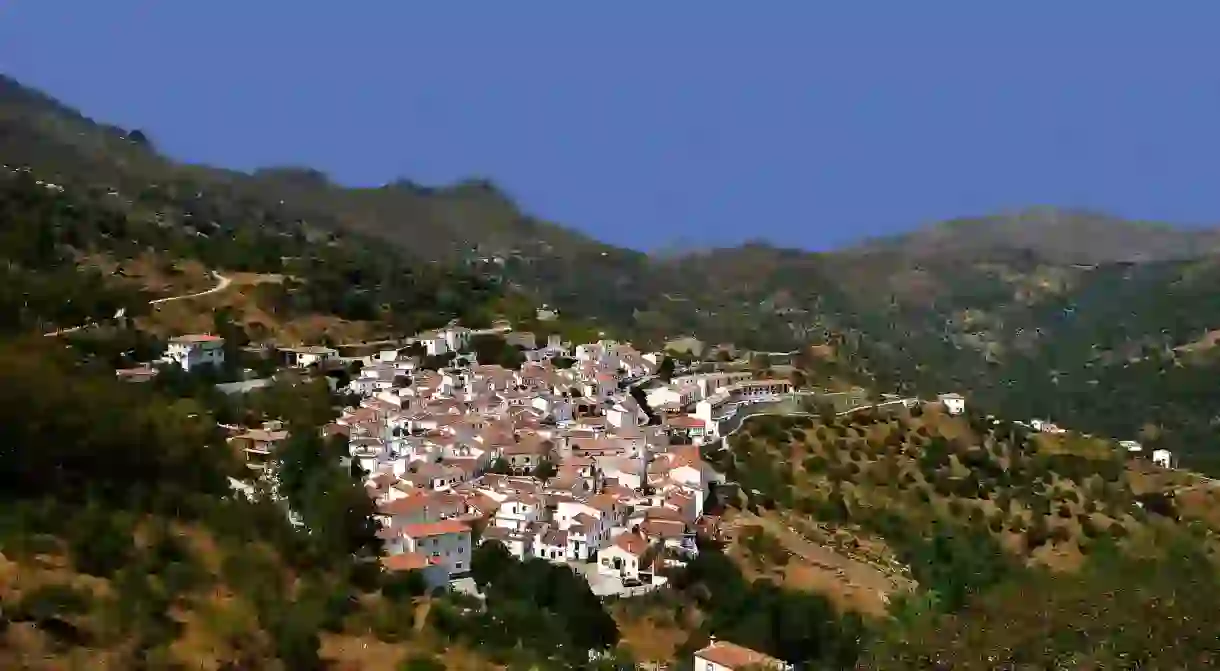6 Glistening White-Washed Villages in Málaga

Málaga province is scattered with “pueblos blancos” – the traditional, picturesque “white villages” of squashed-together old houses and narrow little streets that mark the landscape like snowflakes. Though many of these villages and small towns are firmly-established on the tourist scene, they have nevertheless retained their rural, Andalusian character, as you will see if you visit any of the six below.
Ronda
Were it not perched on two sides of a 330-foot-deep gorge, the beautiful country village of Ronda would probably be overlooked by many visitors to Málaga. But its beautiful and slightly terrifying New Bridge, built in the 18th century to join up Ronda’s two halves, is an architectural masterpiece that has made this quiet little town the third most visited destination in Andalusia. The narrow streets of its old Moorish quarter, La Ciudad (“The Town”) and the newish part known as El Mercadillo (“The Little Market”) – which cling to the south and north sides of El Tajo canyon respectively – are lined with elegant townhouses adorned with yellow-framed doorways and windows, and hanging pots of bright geraniums. Ronda is also the birthplace of modern bullfighting, and its stately 18th century bullring is the town’s other key attraction.

Mijas
Mijas is comprised of two quite separate areas: Mijas Costa is a seven mile stretch of beautiful beaches and coastal resorts, while Mijas Pueblo, tucked between verdant hills several miles inland, is one of Andalusia’s most popular whitewashed villages. Its elevation of 1,400 feet above sea level means you can enjoy cinematic views of the Mediterranean sea and surrounding mountains from its many pretty terraces. And if you can’t be bothered exploring on foot during the furnace of an Andalusian summer, you can take one of the donkey taxis for which the town has become famous. These are the hallmarks of a rural way of life that, were it not for the hordes of tourists that now descend on this sleeply dwelling every summer, remains much as it was a hundred years ago.

Casares
One of the most ridiculously beautuiful of all Andalusia’s white villages is perched on top of a 1,427 foot-high cliff about 10 miles inland from Estepona (see below). Bizarrely, given its vertiginous location and the attractiveness of its crunched-together white houses – that seem to have been stacked on top of one another when you’re approaching from below – Casares remains something of an underdog on the Málaga tourist scene. The standard pueblo blanco offering – narrow little streets lined by the ubiqutous white houses, a 12th century Moorish fort, pretty squares and terraces – is elevated to a new level here (forgive the pun) because of Casares’ high altitude and truly humbling views of the surrounding landscape.

Villanueva de la Concepción
The southern approach to Villanueva de la Concepción from Málaga, which takes you through some of Andalusia’s most dramatic scenery, gives a superb view of this lovely little village’s privileged location. Resembling a giant patch of snow that has somehow settled among the endless olive groves and hills, it hugs the foothills of the stunning El Torcal national park, with its bizarre and fascinating karst rock formations. Some of the more adventurous expats and holidaymakers make it out to Villanueva, but it is essentially an unspoilt, working agricultural village in the typical whitewashed Andalusian style. From the mirador at its eastern end, close to the superb Meson Torfa bar, is a beautiful lookout from which, on a clear day (and there are a lot of them in Villanueva) you can see across the gently undulating countryside right down to Málaga and the Mediterranean beyond.

Estepona
Estepona is often somewhat overshadowed by Marbella, its more famous coastal neighbor, yet it combines the traditional prettiness of an Andalusian pueblo blanco with some of the best beaches and sea views on the Costa del Sol. And while brightly-colored teracotta pots overflowing with scarlet geraniums are a staple of any white village or town in Andalusia, they are particularly abundant in Estepona – especially on the streets surrounding the aptly-named Plaza de Flores, which are some of the most attractive you’ll see in Málaga province. To fully absorb Estepona’s enchanting ambience, simply wander aimlessly around its colorful streets on a warm summer evening, then head to La Rada beach for the sunset. If that doesn’t make you want to immediately cancel your flight home and stay on indefinitely in Andalusia, nothing will.

Antequera
Known as “The Heart of Andalusia” due to its central location and proximity to major cities such as Málaga, Granada, Cordoba and Seville, Antequera has kept its pueblo blanco style and atmosphere despite its considerable size. Its 14th century Moorish Alcazaba – resembling a mini-Alhambra – sits at the top of the historic center’s tightly-packed white houses and beautiful old churches. Like Villanueva de la Concepción – which is only a 20-minute drive away, the other side of the El Torcal nature reserve – Antequera is never beseiged by tourists as some destinations on the Costa del Sol are, so it retains its traditional Andalusian character and ambience all year round. It also boasts a collection of southern Spain’s greatest historical monuments – the Menga and Viera dolmens and the Tholos of El Romeral. These Neolithic and Bronze age tombs are some of the most significant surviving instances of European Megalithism.














